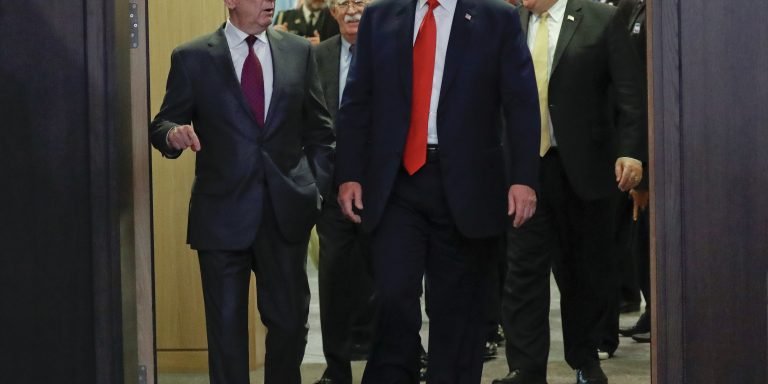INTELBRIEF
August 31, 2018
IntelBrief: Gamesmanship and ‘War Games’

- On August 29, President Trump contradicted his Defense Secretary, James Mattis, announcing on Twitter that he had again cancelled ‘joint U.S.-South Korea war games.’
- As with many presidential tweets, the news ‘there is no reason at this time to be spending large amounts of money’ on joint exercises was at odds with previous statements.
- On September 11, Russia will hold its largest military exercise since 1981; the Vostok-2018drills will include 300,000 Russian troops and 36,000 armored vehicles.
- China is participating in Vostok-2018, a significant development between it and Russia: two former armed rivals.
.
Once again, the U.S. appears to have temporarily canceled joint military exercises with South Korea and the Republic of Korea (ROK) Armed Forces, a day after Defense Secretary James Mattis said ‘the exercises continue. What it means in practical terms is that we’re making no changes to the exercise program at this time.’ The news of the more recent foreign policy contradiction was delivered, as has become typical under the Trump administration, from an August 30 tweet by President Trump. In a series of tweets about the status of the nuclear tensions between the U.S. and North Korea—with China mentioned several times as being both a help and a hindrance—President Trump commented, ‘there is no reason at this time to be spending large amounts of money on joint U.S.-South Korea war games.’ It is unclear whether the President was referring to several military exercises that were postponed in the aftermath of the mid-June Singapore meeting between President Trump and Kim Jong Un. A financial justification for canceling suggests that the president sees little value in the joint exercises. The Defense Department continues its decades-long practice of referring to the drills as ‘joint military exercises’ while the President uses the term ‘war games.’ Training and joint military exercises form a cornerstone of U.S. defense policy, both in terms of building partner capacity and strengthening security cooperation between the U.S. and its allies across the globe.
The military exercises have in the past evoked anger and bombastic statements from North Korean leadership, further ratcheting up tensions and contributing to dangerous escalation dynamics. Pyongyang considers them to be an extreme provocation—even a masquerade for regime change. Suspending the joint exercises after the Singapore meeting without concrete concessions or deliverables by Pyongyang was a significant symbolic move by Washington. Despite tweets by the President, there have been few binding and detailed agreements made between the two countries regarding North Korea’s nuclear weapons and ballistic missile programs. Relations have recently soured again, and the latest statement by President Trump might be an attempt to assuage Pyongyang over the latest round of tensions. Yet, again, the disconnect between various arms of the U.S. government in what is one of its leading national security priorities has created confusion and moved to sow doubt in an issue that requires neither.
In contrast, there is no confusion as to the purpose of what might be Russia’ largest military exercise since 1981. Regarding the size and goal of the military exercises, Kremlin spokesperson Dmitry Peskov stated, ‘the country’s ability to defend itself in the current international situation, which is frequently quite aggressive and unfriendly toward us, is absolutely justified and has no alternative.’
The massive exercise, called Vostok(East)-2018, will take place along the Russia-China-Mongolian border. These large military exercises vary between the east/vostok and the west/zapad zones of Russia. The Zapad 2017 exercises created additional tension to the already elevated levels between the Baltic States/Poland and Russia. NATO has been increasing its own military exercises as well, with all sides using ‘war games’ as gamesmanship both to practically increase military readiness and capability as, well as to demonstrate resolve in terms of a commitment to a robust defense that is intended to bolster deterrence.
The exercises will include more than 300,000 Russian military personnel, 36,000 armored vehicles, and 1,000 planes. In addition to some army units from Mongolia, the exercise will also include approximately 3,200 Chinese military personnel, a clear sign of the steady shift between Russia and China towards a more cooperative and even collaborative unofficial partnership of shared self-interests. The two countries are not allies in any tangible sense, but the U.S. quasi-withdrawal from global or even Western leadership has created opportunities that Moscow and Beijing are eager to exploit.
.
For tailored research and analysis, please contact: info@thesoufancenter.org
[video width="960" height="540" mp4="https://thesoufancenter.org/wp-content/uploads/2018/08/IB-0831.mp4" poster="https://thesoufancenter.org/wp-content/uploads/2018/08/AP_18192470334959.jpg"][/video]